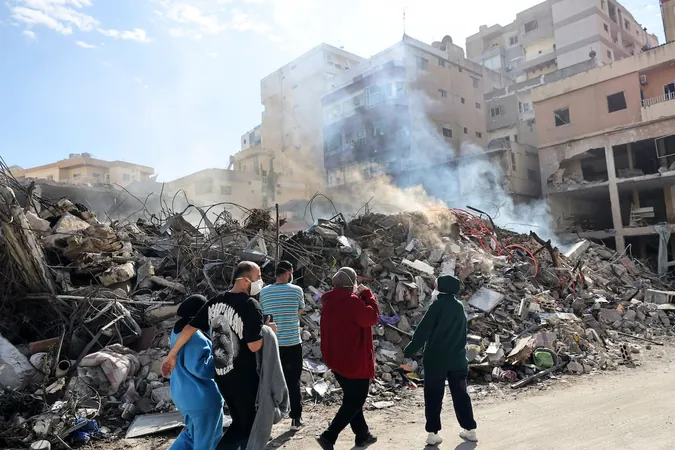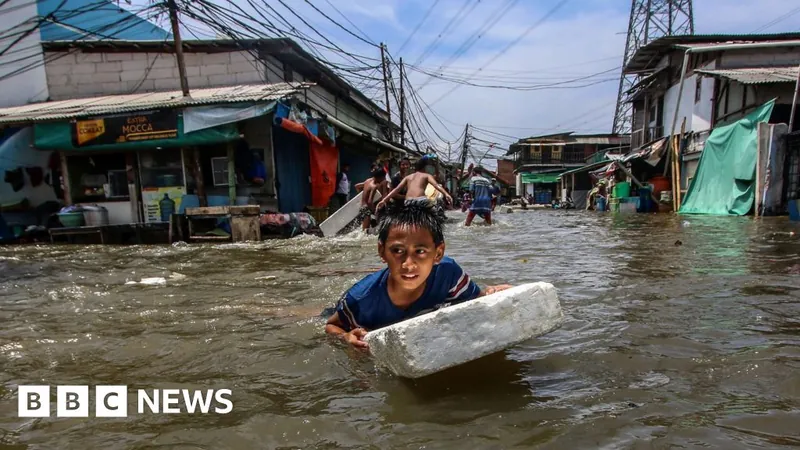
Tensions Escalate: Israel Strikes Hezbollah Amid Fragile Ceasefire
2024-11-28
Author: Jacques
In a dramatic turn of events, the Israeli military launched air strikes against Hezbollah positions in southern Lebanon on Thursday, igniting a renewed wave of conflict just one day after a tenuous ceasefire aimed at bringing an end to over a year of fighting was established.
The Israeli Air Force targeted a facility purportedly used by Hezbollah to store mid-range rockets. Additionally, military sources reported that Israeli forces engaged "suspects" in vehicles appearing in several areas near the southern zone, marking a significant breach of the recently brokered truce.
Accusations flew thick and fast between the two factions; Hezbollah lawmaker Hassan Fadlallah voiced concerns over Israeli violations. “The Israeli enemy is attacking those returning to the border villages,” he stated, emphasizing that recent Israeli actions constitute a clear breach of the agreement.
The ceasefire, brokered by the United States and France, was intended to last for 60 days and was established to put an end to the deadliest confrontation between Israel and Hezbollah in years. However, the escalating tensions and mutual accusations illustrate the frailty of this diplomatic achievement.
The air strike marked the first act of aggression since the truce went into effect, and reports from Lebanese security sources indicate that the Israeli attack targeted areas near Baysariyah, in proximity to the Litani River. Earlier Israeli tank fire reportedly struck five towns and agricultural lands in southern Lebanon, leading to at least two injuries.
The ceasefire agreement mandates the dismantling of unauthorized military installations south of the Litani River, although it notably does not address those situated to the north of the river. As the conflict unfolds, Israel has maintained a strict curfew, confining the movement of southern Lebanese residents and reinforcing military presence in the area.
Lebanese families affected by the conflict are cautiously attempting to return to their homes, seeking to evaluate property damage. However, Israeli troops remain firmly stationed across several border towns, with surveillance drones frequently spotted overhead.
While the ceasefire was seen as a necessary diplomatic success amid ongoing turmoil in the region, Israel continues its offensive against Hamas in the Gaza Strip in retaliation to a deadly raid on southern Israel on October 7, 2023. The ongoing battle has resulted in significant casualties on both sides, with the Lebanese health ministry reporting that Israeli strikes have led to the deaths of at least 3,961 individuals and injuries to over 16,500 since October. These numbers do not distinguish between civilian casualties and combatants.
On the Israeli side, fatalities have also mounted, with at least 45 civilian deaths reported in northern Israel and the Golan Heights, alongside 73 soldiers lost in combat and other operations related to the conflict.
Prime Minister Benjamin Netanyahu has reiterated the importance of ensuring the safety of Israelis in northern regions, yet around 60,000 individuals evacuated from their homes due to the conflict remain unable to return. Conditions on the ground appear grim as Hezbollah insists that its forces are prepared to defend against any perceived Israeli aggression, maintaining that they will closely monitor Israeli troop movements.
In a related context, President Joe Biden has indicated an intent to shift focus towards a ceasefire agreement in Gaza, urging both Israel and Hamas to seize the opportunity to broker peace following the recent developments.
As tensions linger and the situation evolves, the fragile ceasefire appears increasingly precarious, with both sides poised for further confrontation. Will this ongoing struggle lead to a broader conflict, or can peace be salvaged? The world watches closely as events unfold.









 Brasil (PT)
Brasil (PT)
 Canada (EN)
Canada (EN)
 Chile (ES)
Chile (ES)
 España (ES)
España (ES)
 France (FR)
France (FR)
 Hong Kong (EN)
Hong Kong (EN)
 Italia (IT)
Italia (IT)
 日本 (JA)
日本 (JA)
 Magyarország (HU)
Magyarország (HU)
 Norge (NO)
Norge (NO)
 Polska (PL)
Polska (PL)
 Schweiz (DE)
Schweiz (DE)
 Singapore (EN)
Singapore (EN)
 Sverige (SV)
Sverige (SV)
 Suomi (FI)
Suomi (FI)
 Türkiye (TR)
Türkiye (TR)